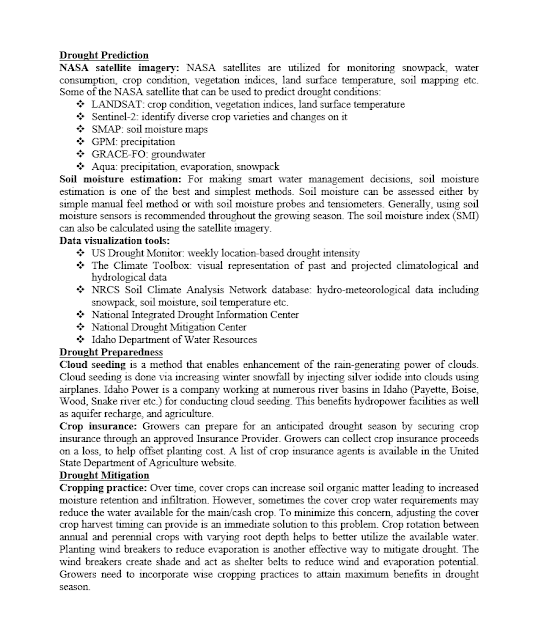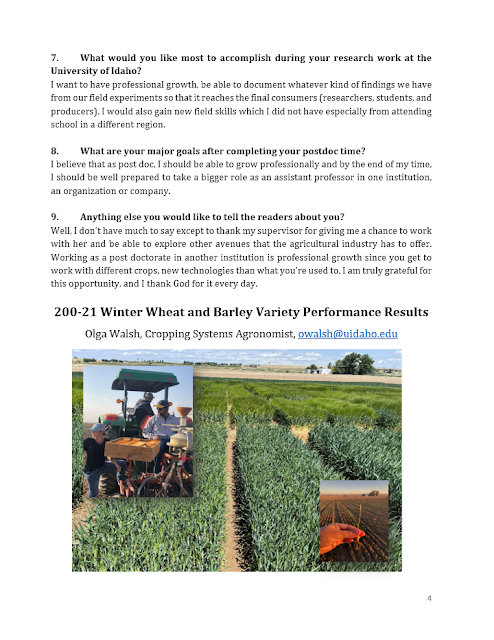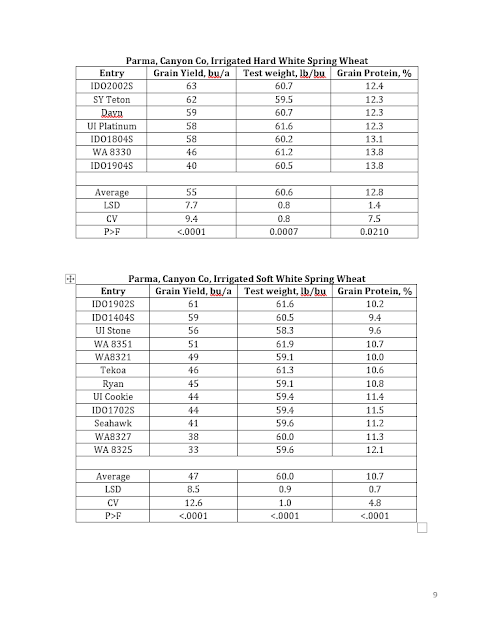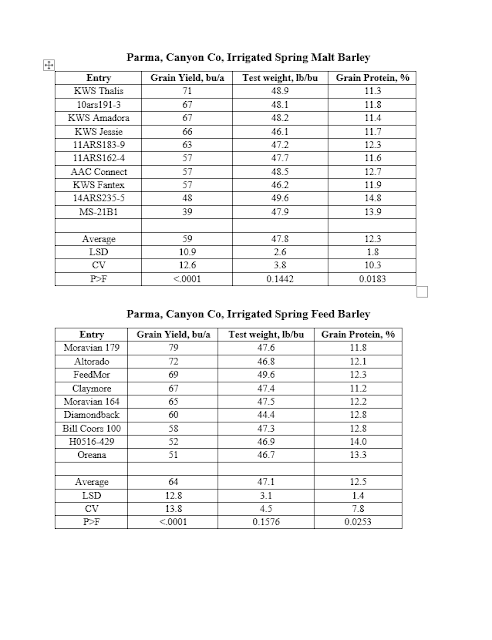Both Hard Red Spring and Hard White Spring were trialed under irrigation. In a tough production year, the Hard Red trial averaged 54 bu/ac. with a mean test weight of 61.1 lbs. SY Gunsight, WA 8356, and AP Renegade were the top yielders. The Hard White trial yield was similar with a mean of 55 bu/ac. and an average test weight of 60.6 lbs. IDO2002S, SY Teton, and Dayn topped the entry list.
In the Soft White Spring trial, low yields pulled the mean trial yield to 47 bu/ac. while test weights held at an average of 60. IDO1902S, IDO1404S, and UI Stone produced the best in the challenging conditions. Preliminary results for irrigated club wheat, feed, and malt barley can be found at the same link. Further information about Dr. Walsh and her work can be found here.
By: Dr. Garrett R. Dudley, Research Manager, Idaho Wheat Commission























































